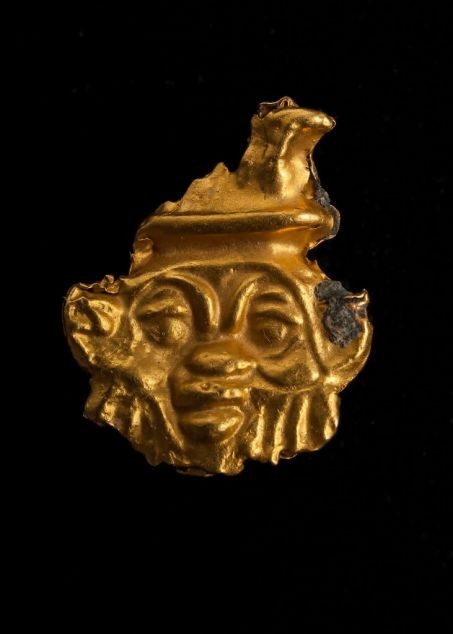"A Franco-Egyptian mission (...) found remains of a military ship from the Ptolemaic era and remains of a Greek funerary complex dating from the fourth century BC ", said the Egyptian Ministry of Antiquities in a statement.

Photo released by the Egyptian Ministry of Tourism and Antiquities on July 19, 2021, of a diver exploring a military vessel in the submerged ancient city of Heracleion.
Archaeologists have discovered the remains of a military ship and a funerary complex in Heracleion, an ancient Egyptian city immersed in the Mediterranean, the Egyptian Ministry of Antiquities announced on July 18, 2021.
"Finds of ships from this period are extremely rare"
The discovery was made during underwater excavations in Heracleion (Thônis in ancient Egyptian), which was one of the main ports of the country located at the mouth of the Nile until Alexander the Great founded the city of Alexandria in 331 BCE. The city, discovered in 2001, was submerged after a series of earthquakes and high tides. "A Franco-Egyptian mission (...) found remains of a military ship from the Ptolemaic era and remains of a Greek funerary complex dating from the fourth century BC ", said the Egyptian Ministry of Antiquities in a statement.

A photo released by the Egyptian Ministry of Tourism on July 19, 2021, shows a diver unearthing pottery in the submerged ancient city of Heracleion. Credit:Egyptian Ministry of Antiquities / AFP
The flat-bottomed ship (a galley), with wide oars, a mast and sails, was 25 meters long and was used for navigation in the Nile Delta, according to the first deductions of archaeologists. According to them, the ship was to moor at the quay of the ancient temple of Amun. This Ptolemaic galley sank due to "the falling building blocks of the famous Temple of Amun when it was totally destroyed in a cataclysm in the 2nd century BC ", according to a statement from the European Institute of Underwater Archaeology, which led the mission. "Finds of ships from this era are extremely rare ", estimates Franck Goddio, the famous discoverer of the archaeological site of Thônis-Herakléion, founder of this institute. The galley, which rests under nearly 5 meters of hard clay, was detected thanks to the use of a new prototype sediment sounder.

Photo released by the Greek Ministry of Tourism on July 19, 2021 showing a gold fragment discovered in the submerged ancient city of Heracleion. Credit:EGYPTIAN MINISTRY OF ANTIQUITIES / AFP
A funerary complex reflecting the presence of the Greeks
The researchers also discovered a funerary complex showing the presence of Greek merchants and mercenaries in the region during the Late Period of Ancient Egypt. "Indeed, the Greeks had been allowed to settle in the city during the last pharaonic dynasties. They built their own sanctuaries near the great temple of Amun “, indicates the European Institute of Underwater Archaeology. Remains of these temples have been discovered under water “in excellent condition ", according to the Egyptian Ministry of Antiquities. These latest finds "show the wealth of temples in this city that now rests in the Mediterranean Sea “, he marvels.
Revive tourism
The Egyptian authorities regularly announce archaeological discoveries, sometimes without waiting for the conclusions of the experts responsible for the necessary scientific analyzes and putting them into perspective, according to specialists. Cairo has announced several important archaeological discoveries in recent months with the hope of reviving tourism, a sector which has faced many difficulties since the 2011 revolution that ousted former President Hosni Mubarak from power until the coronavirus pandemic. coronavirus today.
